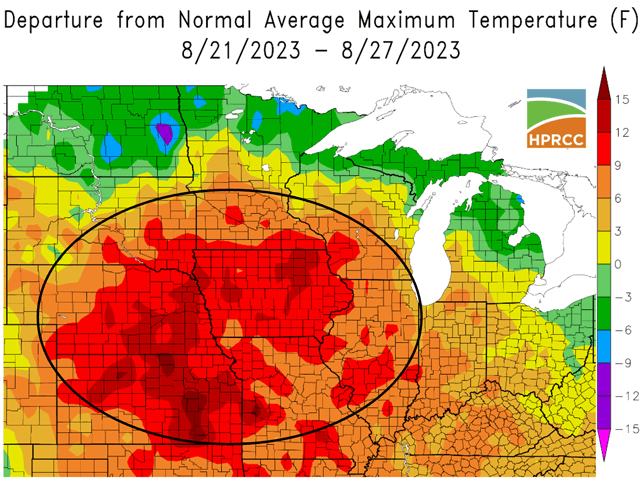Editors' Notebook
How's the Crop? Well, Let Us Tell You
It seems almost every day there's another data point, or another X (yes, that social media site formerly named after an obnoxious bird sound) opinion thread on just how bad, or how good, the 2023 crop is shaping up to be. The only thing more plentiful is opinions on why other people's opinions are full of bird droppings.
While we don't shy from opinions, we also like to believe in good old-fashioned science and accurate data sources. And there's a lot of that to look at, compare and think about on our digital platforms.
One of the most recent posts is from the statistical uber-mind of DTN Contributing Analyst Joel Karlin. If you follow his blog, Fundamentally Speaking, you know this former grain trader and buyer loves to skewer opinions on a data-driven petard. His latest look, a comparison of the results of most recent crop scouting and estimation events, is here: https://www.dtnpf.com/….
Karlin considers the differences in those yield estimates, then compares the numbers with soil moisture levels in various areas, as well as how yields typically respond when soil moisture is above or below the norm.
A great companion piece to that is DTN Ag Meteorologist Emeritus Bryce Anderson's look at the latest temperatures across the Corn Belt, and how their variation can influence final yields. Anderson's Ag Weather Forum blog is here: https://www.dtnpf.com/….
P[L1] D[0x0] M[300x250] OOP[F] ADUNIT[] T[]
In it, he takes a deep dive into the hot August weather and what that's historically meant for developing corn ears.
For yet another look at what the data portends, give a read, or a second read, to DTN Contributing Analyst Elaine Kub's latest Kub's Den. Her Aug. 23 column explored publicly available Mesonet weather data, which you can use to zoom in on a particular part of the country and see just how dry, or how wet, conditions actually are. If you missed it, that column can be found here: https://www.dtnpf.com/….
I'd note DTN customers, with the proper subscription level, can also take an in-depth look at localized rainfall and soil moisture conditions around the country using our layered weather map plus the Ag Weather and Historical Weather sections on their specific platform.
As for over the northern border into Canada, our DTN Canadian Grains Analyst Cliff Jamieson has the latest Canadian crop production estimates that were released Tuesday by Statistics Canada and he puts into perspective how much the drought has affected the crops in the Prairies. For example, the most acres of spring wheat were planted in 22 years -- but the crop is estimated to be down 14.6% from last year and 6.3% below the five-year average. See more at https://www.dtnpf.com/…. Also, in his daily Canada Markets blog (https://www.dtnpf.com/…) he often analyzes the latest provincial crop progress reports as they come out.
Lastly for this collection, but certainly not the end of the ways we're watching the 2023 crop, you can hear what some farmers think about the crops in their neighborhoods by checking out the latest View From the Cab edition, put together by DTN Crops Technology Editor Pamela Smith. In her last piece, VFTC subjects Zachary Grossman from Missouri, and Chandra and Mike Langseth from North Dakota, give a tour of their fields and their expectations. Smith's piece can be found here: https://www.dtnpf.com/….
We'll keep the information coming, including an update from our friends at Gro Intelligence, who help us each year with our DTN Digital Crop Tour. To know more about that, check here: https://spotlights.dtnpf.com/….
And of course, every Monday we'll have the latest Crop Progress report data from USDA, plus analysis of those reports from our DTN ag weather and commodity analyst teams.
At this point, there's not much most farmers can do about their crop other than deciding the optimum time to get it out of the field. But you can base that timing, and grain sales or purchase decisions, not just on how things look around your place, but how the national crop is shaping up. Our efforts might not make decisions simpler, but they should help make them more informed.
Greg D. Horstmeier can be reached at greg.horstmeier@dtn.com
Follow him on X, formerly known as Twitter, @greghorstmeier
(c) Copyright 2023 DTN, LLC. All rights reserved.




